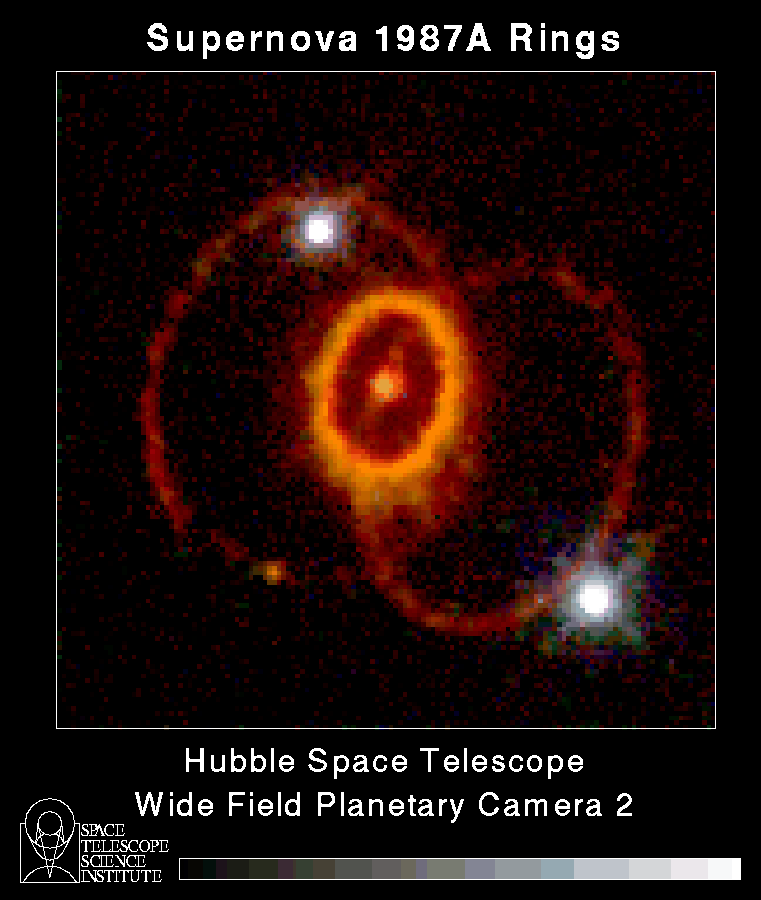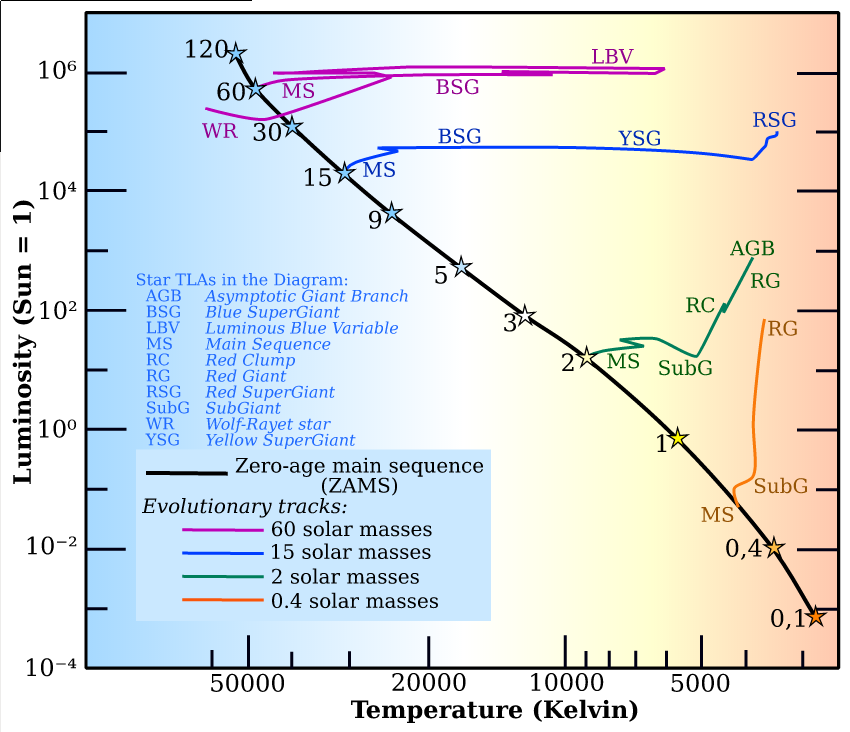
|
Protostar-->Main Sequence-->Subgiant-->Red Giant-->AGB-->Supernova--> Black Hole or Neutron Star |

|

|
Protostar-->Main Sequence-->Subgiant-->Red Giant-->AGB-->Supernova--> Black Hole or Neutron Star |

|

|
On the Main Sequence, the star generates energy in its core
through hydrogen burning using the carbon-nitrogen-oxygen cycle,
CNO cycle,
as opposed to the proton-proton cycle
found in low-mass main sequence
stars.
While on the Main Sequence,
its L slowly
increases while its surface T decreases (the star moves to the right and up
in the HR diagram).
|
The star then merrily cruises along in this state (helium burning in its core, surrounded by a hydrogen burning shell) until it scours the helium out of its core. The core of the star then cools, and starts to contract in an attempt to replace the heat lost by radiation from its surface. (This causes the star to start moving to the right in the HR diagram again).
Now, just as before when the contracting core heated the surrounding region and caused the ignition of hydrogen in a shell, the contracting core heats the surrounding helium and ignites helium burning in a shell. The star moves again rapidly to the right in the HR diagram.
When the conditions become right for convection to set in, the star rapidly increases in L (and moves almost vertically in the HR diagram). It ascends what is referred to as the Asymptotic Giant Branch (AGB).
It moves up the AGB until the core contracts enough to raise its temperature to the carbon ignition point at the tip of the AGB. When it ignites carbon, the star stops moving upward. Note--the lifetime of the carbon burning state is hundreds of years. This is too fast for the star to make any appreciable changes in its overall structure and so the outward appearance of the star does not change during carbon burning.
When the carbon is scoured out of the core, the core contracts until it can start carbon burning in a shell around the core and neon burning in the core. The neon burning lasts ~ 1 year and so the outward appearance of the star does not change during this phase of evolution. For stars around 10 x the mass of the Sun, the process stops after this phase. For more massive stars, the nuclear processing continues as described next.
 |
For stars more than ~10 x the mass of the Sun,
the nuclear game continues to oxygen
burning to silicon burning with the total time required for these
phases being less than 1 year and so outward evolution of the star
is not be visible for these stages.
|
A large uncertainty in the evolution of massive stars concerns mass loss during the course of their evolution. Hot, massive stars and cool, luminous stars are both sources of prodigous stellar winds; they can lose a solar mass of material on time scale ranging from hundreds of thousands of years to several hundred million years. These sound like long times, but given the time required for stellar evolution, these sorts of rates can affect the way in which stars evolve! The detailed physics by which such winds are generated are not well-understood and usually these effects are included in calculations in rather arbitrary manners. They are usually included by hand.